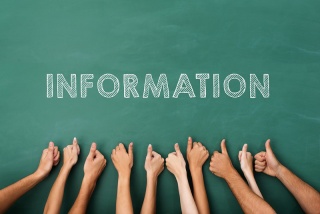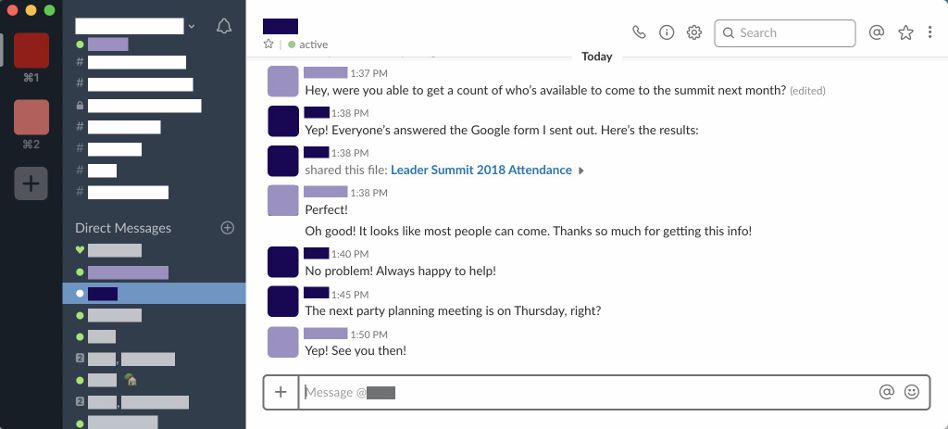Writing for Business Success/Effective business writing/Informative business messages
| “ | Communication is your ticket to success, if you pay attention and learn to do it effectively. | ” |
| —Theo Gold[1] | ||
We are starting our exploration of business writing in action by looking at informative messages. These are the most frequent type of business communication and they can take many forms, depending on the situation. In this section, we will introduce some guidelines for writing effective informative messages and see them in action in short and long communications.
Contents
What is an informative message?
An informative message in the workplace is simply the sharing of meaningful information between people in an unbiased and professional manner. Informative messages can be short or long, formal or casual in tone, internal or external in focus, and direct or indirect in structure, depending on the situation. Like all forms of communication, the purpose of informative messages is to promote understanding, encourage action, stimulate thinking, or promote ideas.
Since informative messages are so prevalent in business communication, there are too many examples of possible use to mention in this brief section. Simple, informative messages can be used, for example, to let employees know of upcoming IT system maintenance, a new break-room cleanliness policy, or a new meeting time. More complex messages can be used to announce a significant company win over a competitor, a new product launch delay, the creation of a new division within the company, or quarterly financial results.
Informative messages can take on almost any form of written communication: IMs (instant messages), chats, emails, presentations, memos, blogs, podcasts, press releases, and reports. The situation at hand will guide how the message is crafted and how it is sent.
Despite the variety of informative messages and how they can be sent, there are still some guidelines that pertain to all effective business writing.
- Get to the main idea as quickly as possible.
- Use a greeting to identify the audience.
- Be clear and concise with the presentation of information.
- Check your message for grammatical errors.
- Include a call to action.
Short informative messages
Short, informative messages can take a variety of forms. For example, a quick communication to a teammate can use IM technology and provide an opportunity for a quick response. These messages tend to be more conversational in structure, and resemble a chat more than an email or other document (Figure 1).
Another form of a short informative message could be a Twitter message, or 'tweet'. Tweets are better for communicating with larger audiences, possibly external as well; in fact, one of the primary uses of Twitter (by companies) is advertising and promoting their brands. (For more information on using Twitter and other social media platforms for business purposes, see Common social media platforms in Business communication skills for managers.)
If the situation requires a more formal approach for your message, sending an email is usually more appropriate. In this example, the communication is being sent to a company executive from a subordinate.
| Example: short informative email |
|---|
| To: Dave McCann
CC: Subject: Change Of Plans (the customer wants to meet before lunch tomorrow) From: Jon Parks Good morning Dave, Our contact just sent me a message requesting that we meet in their lobby at 11:00 am instead of meeting for lunch at 12. Will that work for your schedule? Thank you, Jon
Senior Account Manager Code Software |
Long Informative Messages
While long informative messages can be delivered through a variety of mediums, they will typically have the same elements regardless of the delivery method. As with all business messages, it’s still important to remember to be concise. While there are certainly more complex messages that require longer communications, remember to stay focused, and only provide the information your audience needs.
The Message
This example is an email message providing members of a professional organisation, the Flexible Learning Association of New Zealand (FLANZ), with information about their upcoming Annual General Meeting.
| Example: Long informative email |
|---|
| From: FLANZ administrator
Bcc*: FLANZ members Subject: Call for nominations and notice of Flexible Learning Association AGM
The FLANZ executive invites all FLANZ members to attend this meeting. Call for nominationsFLANZ is calling for nominations for the following elected committee positions.
We will also be electing members to be part of the Executive Committee, and call for nominations for these. We strongly encourage anyone working in this area to consider joining our Executive Committee. Download the nomination form here. Please forward your completed nomination form to the FLANZ Administrator, [name and email address]. Please note:
We look forward to seeing you at the AGM.
Notice of 2020 Annual General MeetingNotice is hereby given of the Annual General Meeting of FLANZ The AGM will be held online via Zoom at [zoom address supplied here] on Tuesday 04 August at 12:30pm.
Supporting documents will be circulated prior to, and available at the meeting. Kind regards, The FLANZ executive team |
*Note that for an email to a circulation list like this, the 'Bcc' (=blind copy) option is used for the addressees instead of the 'to' option. This ensures that no recipient can see the contact details of any other recipient. This is important for data protection. Bcc should be used for any situation where you are not sure whether the email recipients have agreed for their contact details to be shared.
Acknowledgements
The main content on this page was adapted from Informative business messages, authored by Robert Danielson and provided by Lumen Learning within the online open textbook Business communication skills for managers. Licensed under a CC BY-4.0 licence.
The example long email is adapted from a real email (and web page) sent by The Flexible Learning Association of New Zealand and licensed under a CC BY-SA 4.0 licence.
References
- ↑ Communication: The Communication Bible; Social Skills, Body Language, Influence & Persuasion, by Theo Gold. 2016

